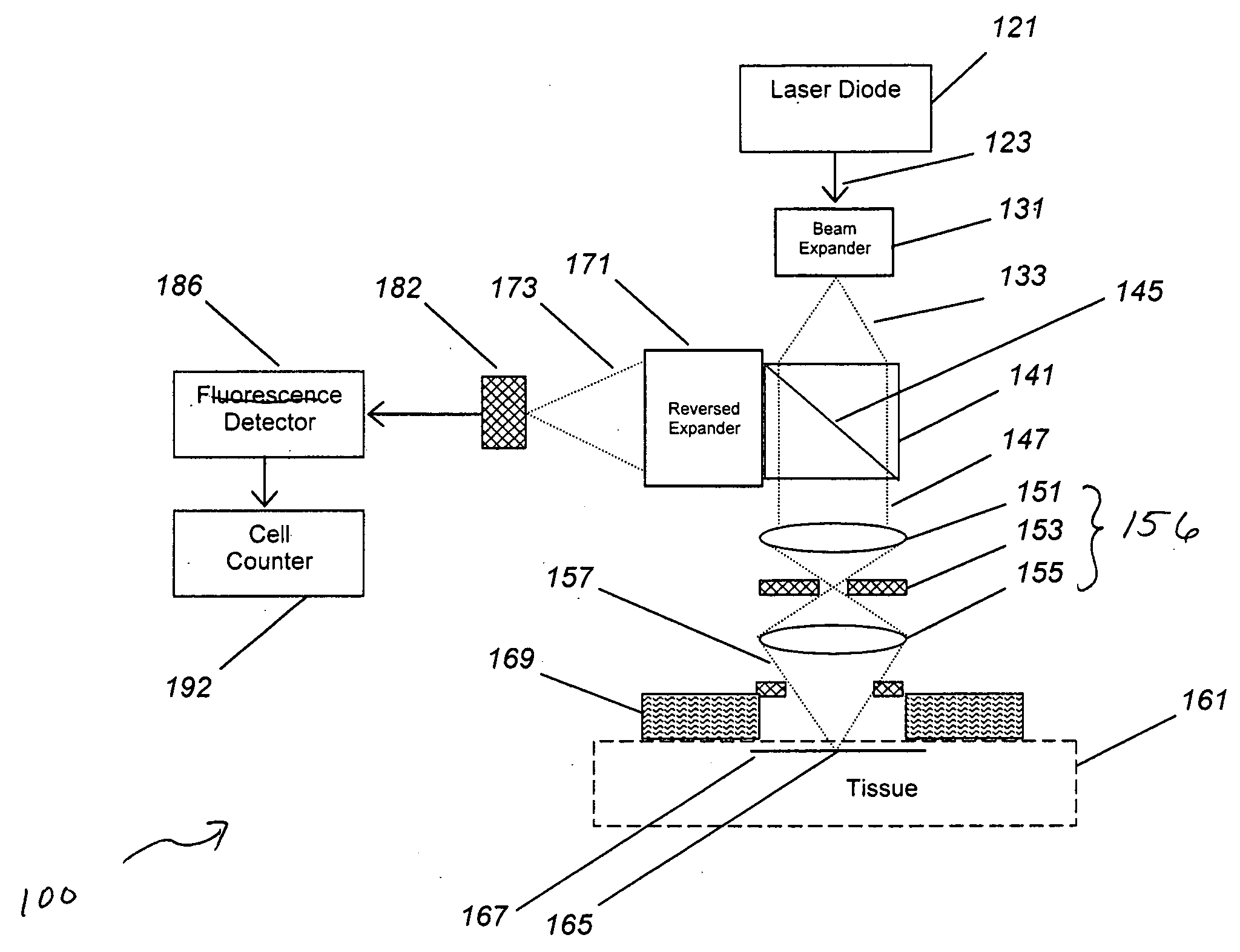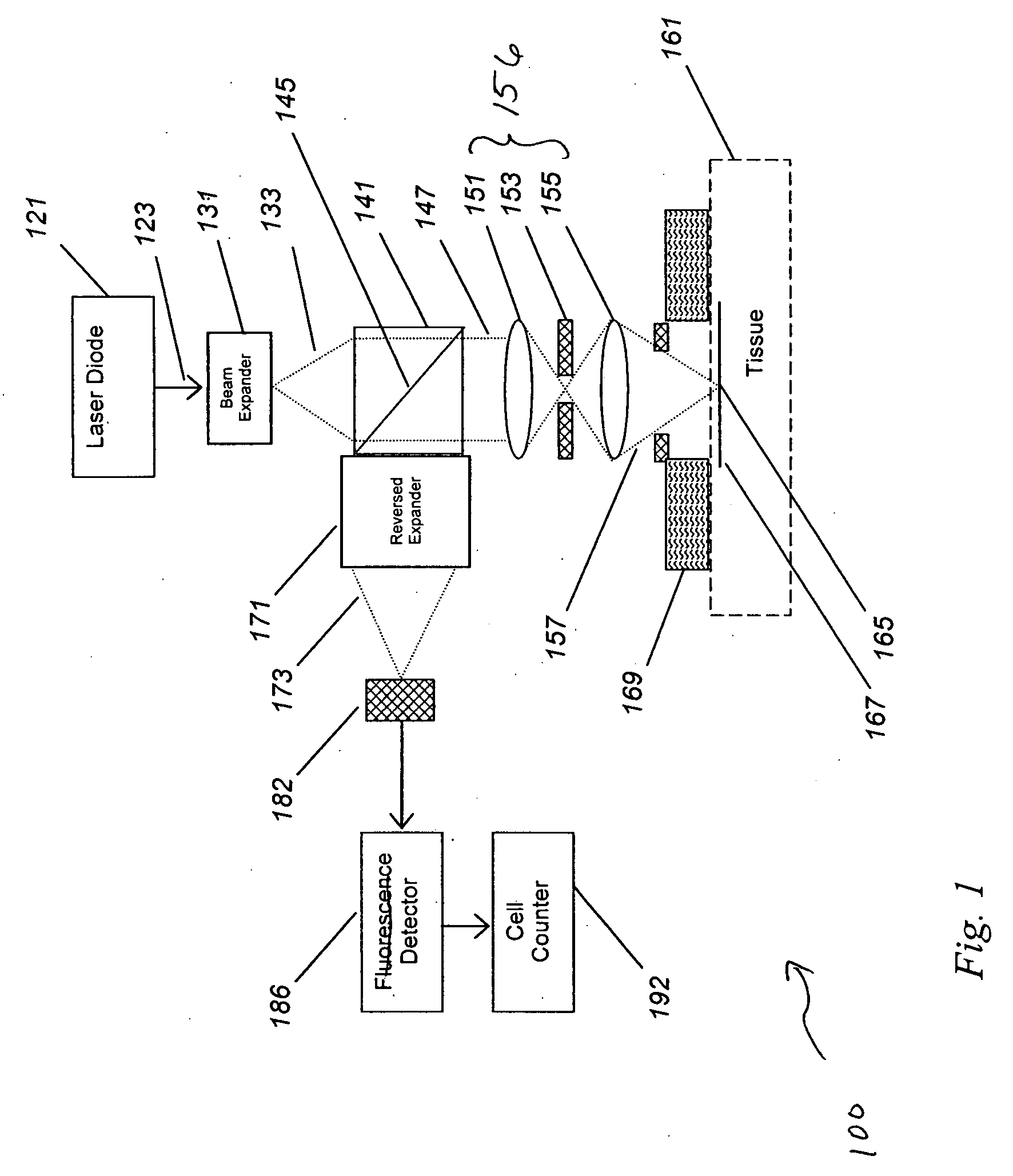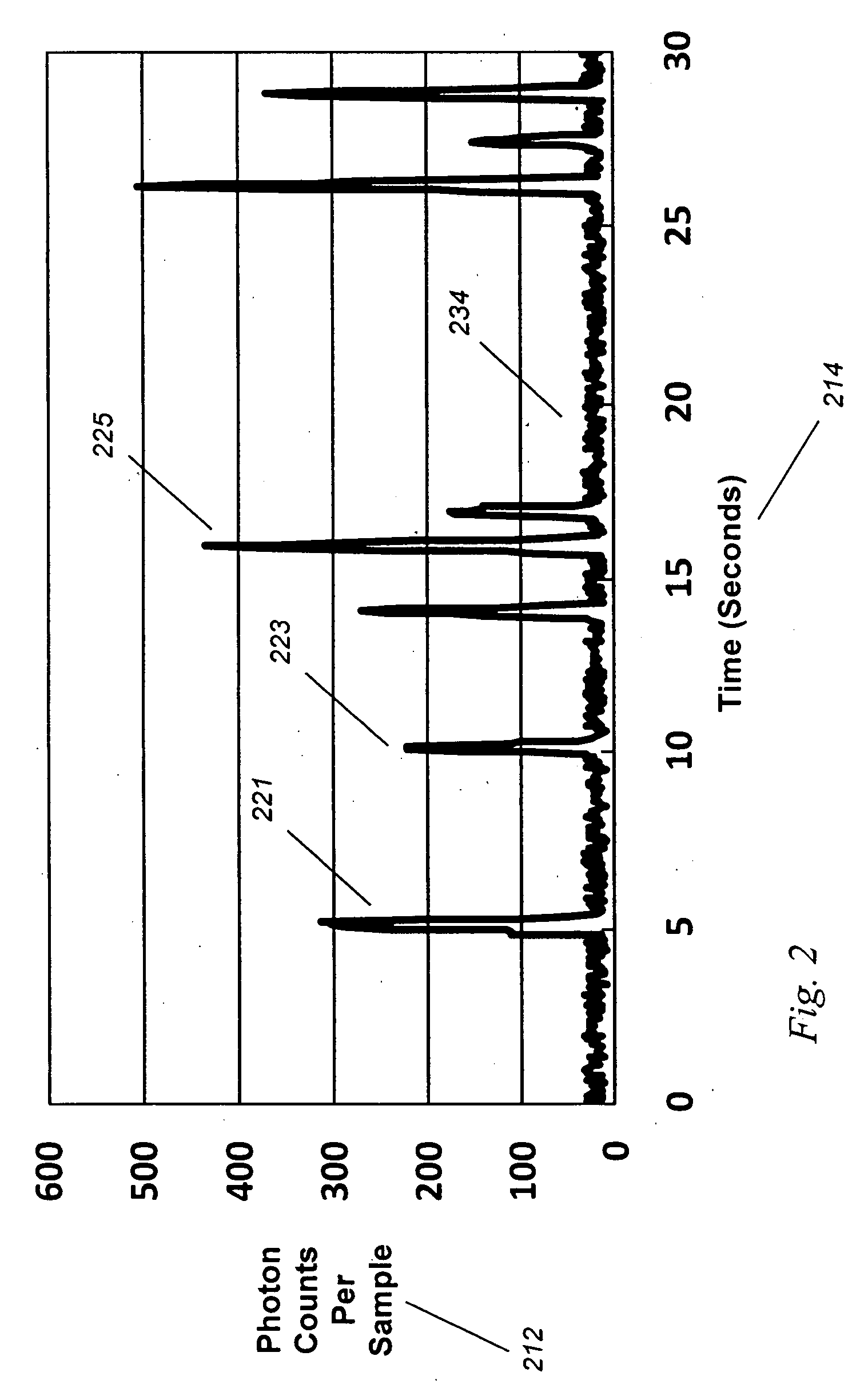Systems and methods for the detection and analysis of in vivo circulating cells, entities, and nanobots
a technology nanobots, applied in the field of systems and methods for the detection and analysis of in vivo circulating cells, entities, nanobots, etc., can solve the problems of inability to perform serial testing, high mortality rate of sepsis, and nearly universal restrictions of methods to ex vivo use, so as to improve specificity, eliminate large blood draws, and improve specificity
- Summary
- Abstract
- Description
- Claims
- Application Information
AI Technical Summary
Benefits of technology
Problems solved by technology
Method used
Image
Examples
example 1
Expected Lower Limit of Cell Detection
[0065]We estimated the minimum number of cells detectable.
[0066]In many (but not all) cases, the detected cells are in the vascular compartment, which provides the flow needed to generate the cell counting signals. The vascular volume (e.g., the volume of the tissue measured that resides within the vascular compartment) was estimated and then verified by experiment. As an estimate, human tissue has an average blood volume of about 2%, but this can be as high as 10% or more when imaging a capillary-rich bed. With a view of 1 mm and a wide focusing depth of 1 mm, this yields a tissue measurement volume of 1 uL, or a vascular volume of 0.1 uL or less. This level of vascular contact has been confirmed in laboratory tests, with volumes as high as 100 uL for large fiber probes, and volumes under 1 uL for the smallest probes.
[0067]Next, the concentration and count of the target cell was estimated. Cell counts for normal blood elements are known. For wh...
example 2
Detection a Model of Tissue
[0074]In order to test the validity of the data generated using the model shown in Example 1, we constructed a working system and tested this in a fluid model of tissue.
[0075]We have shown that in vivo circulating cell counting is feasible. Such improved lens systems may be designed as a standalone device, or embedded into a diagnostic or therapeutic system.
[0076]We have discovered an improved circulating cell counter that operates in vivo. A fiber-based illumination and detection system as been constructed and tested, in which a fiber optic system is used for light collection and collection, and a photodetector has been used to detect and quantify “blips” in returning light. A medical system incorporating the improved device, and medical methods of use, are described. This device has been built and tested in several configurations in models, animals, and planned for humans, and has immediate application to several important problems, both medical and indu...
example 3
Detection of Circulating Prostate Tumor
[0077]By creating a ligand targeted against the extracellular domain of PSMA, a molecule found on the membrane of cells in duct tissue in the prostate gland, one has a binding target that is found only on the surface of prostate cells, and to a lesser extent on new blood vessels (neoangiogenesis). This binding site is also found on circulating tumor cells, such as in prostate cancer.
[0078]We created a ligand using the hj-591 antibody developed by Bander et al. at Cornell University, and coupled this to CyDye (Amersham Health, General Electric, England) using chemistry pathways under the direction of Darryl Bornhop at Vanderbilt University. This work was funded by the US Government (PHS Grant CA107908, David Benaron, Principal Investigator).
[0079]Because the dye binds to prostate cells, circulating tumor cells may be detected using the methods and systems described in Examples 1 and 2.
PUM
| Property | Measurement | Unit |
|---|---|---|
| wavelengths | aaaaa | aaaaa |
| wavelengths | aaaaa | aaaaa |
| wavelengths | aaaaa | aaaaa |
Abstract
Description
Claims
Application Information
 Login to View More
Login to View More - R&D
- Intellectual Property
- Life Sciences
- Materials
- Tech Scout
- Unparalleled Data Quality
- Higher Quality Content
- 60% Fewer Hallucinations
Browse by: Latest US Patents, China's latest patents, Technical Efficacy Thesaurus, Application Domain, Technology Topic, Popular Technical Reports.
© 2025 PatSnap. All rights reserved.Legal|Privacy policy|Modern Slavery Act Transparency Statement|Sitemap|About US| Contact US: help@patsnap.com



